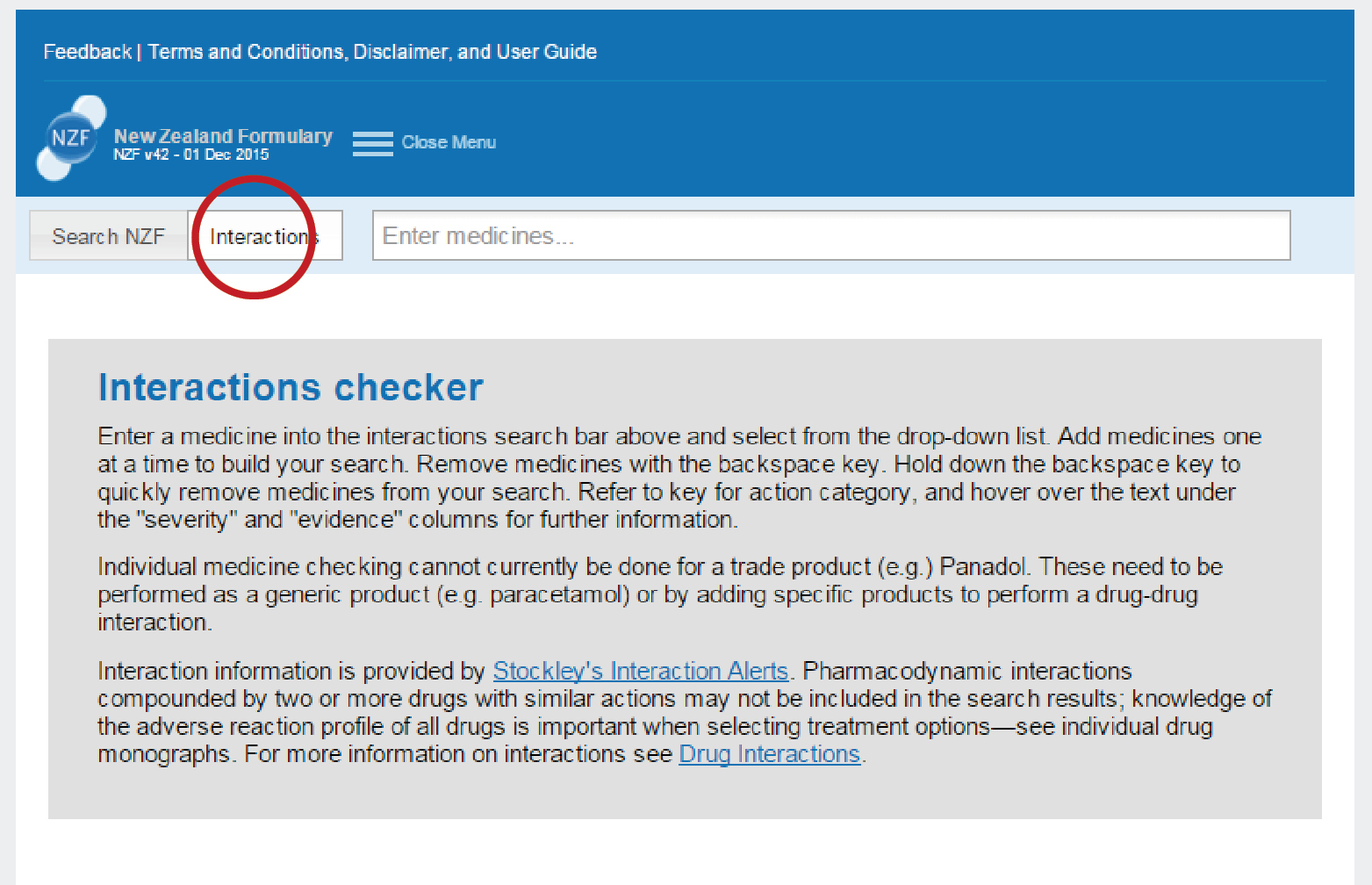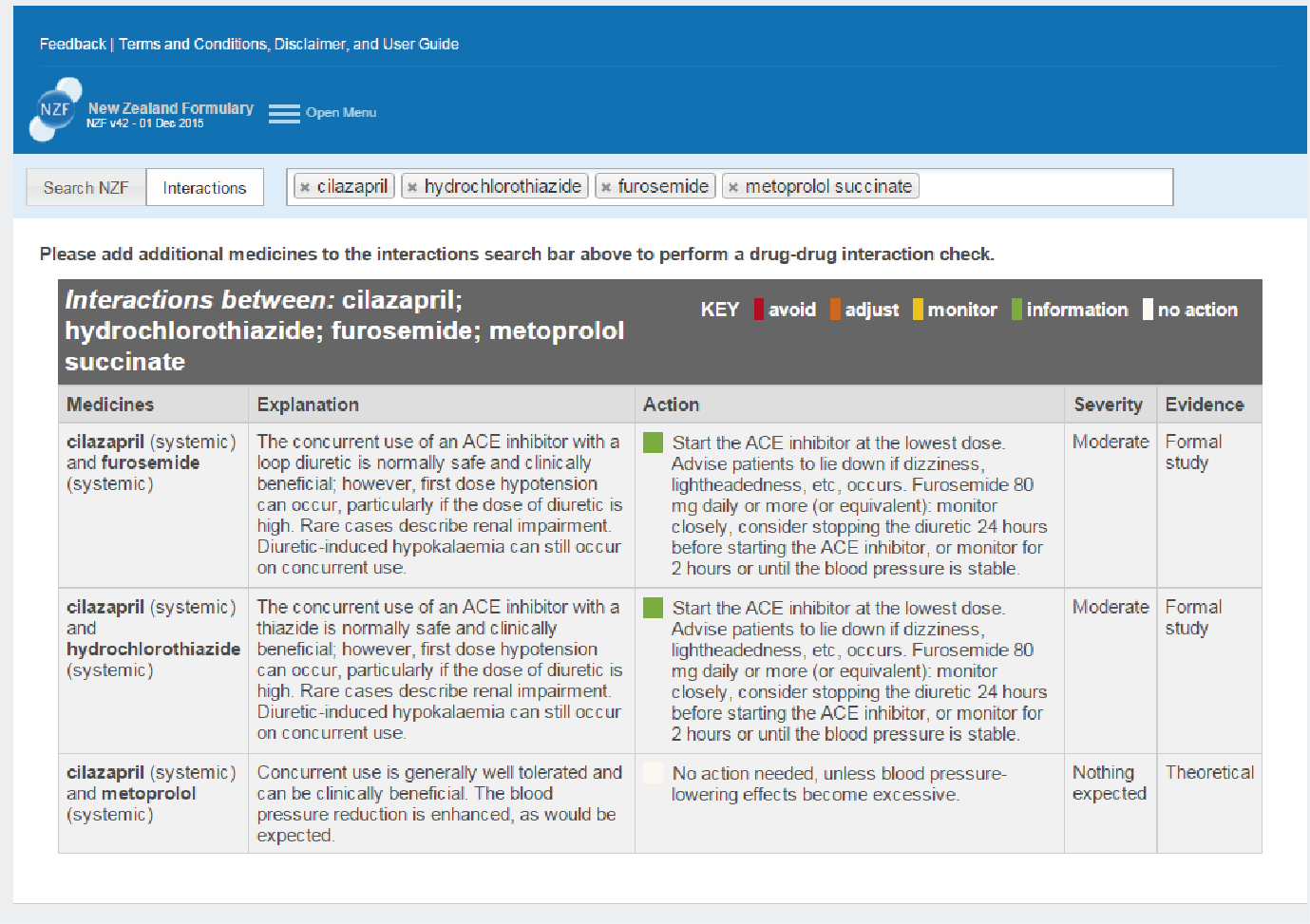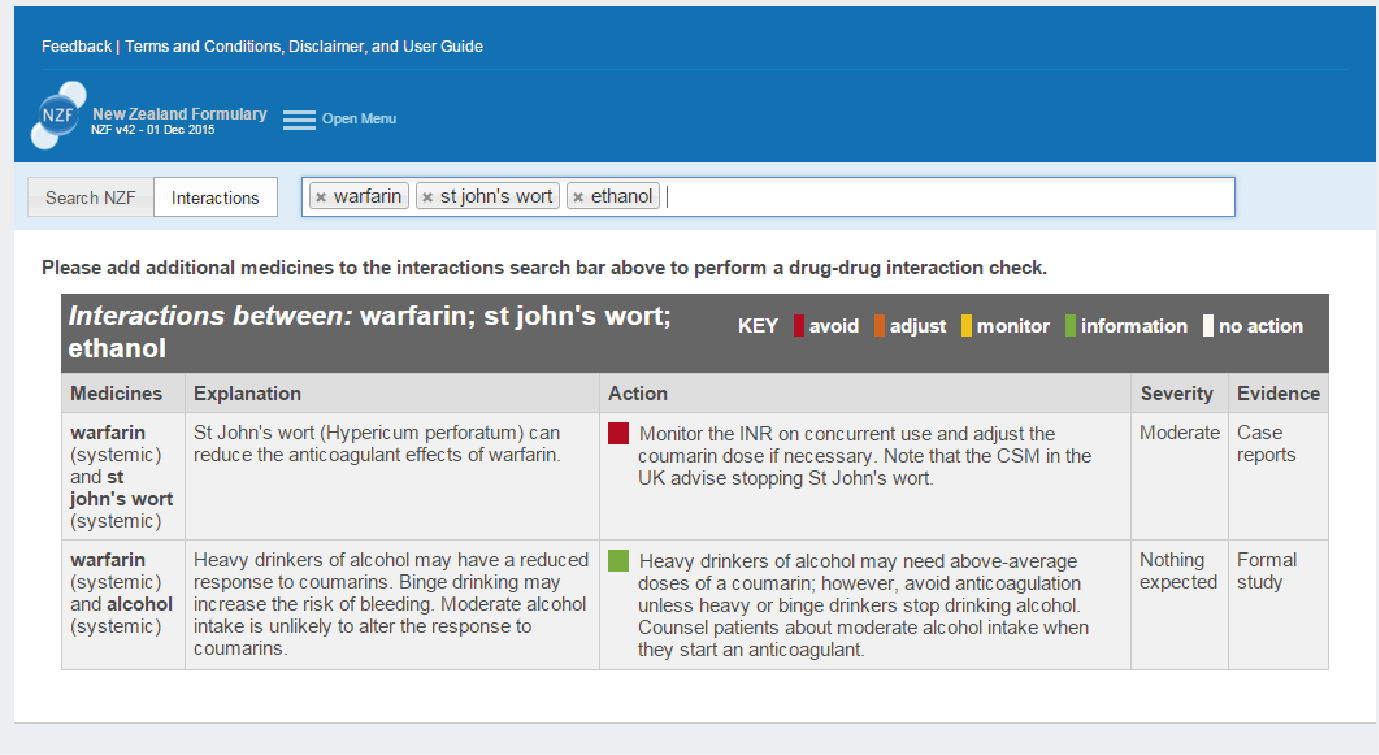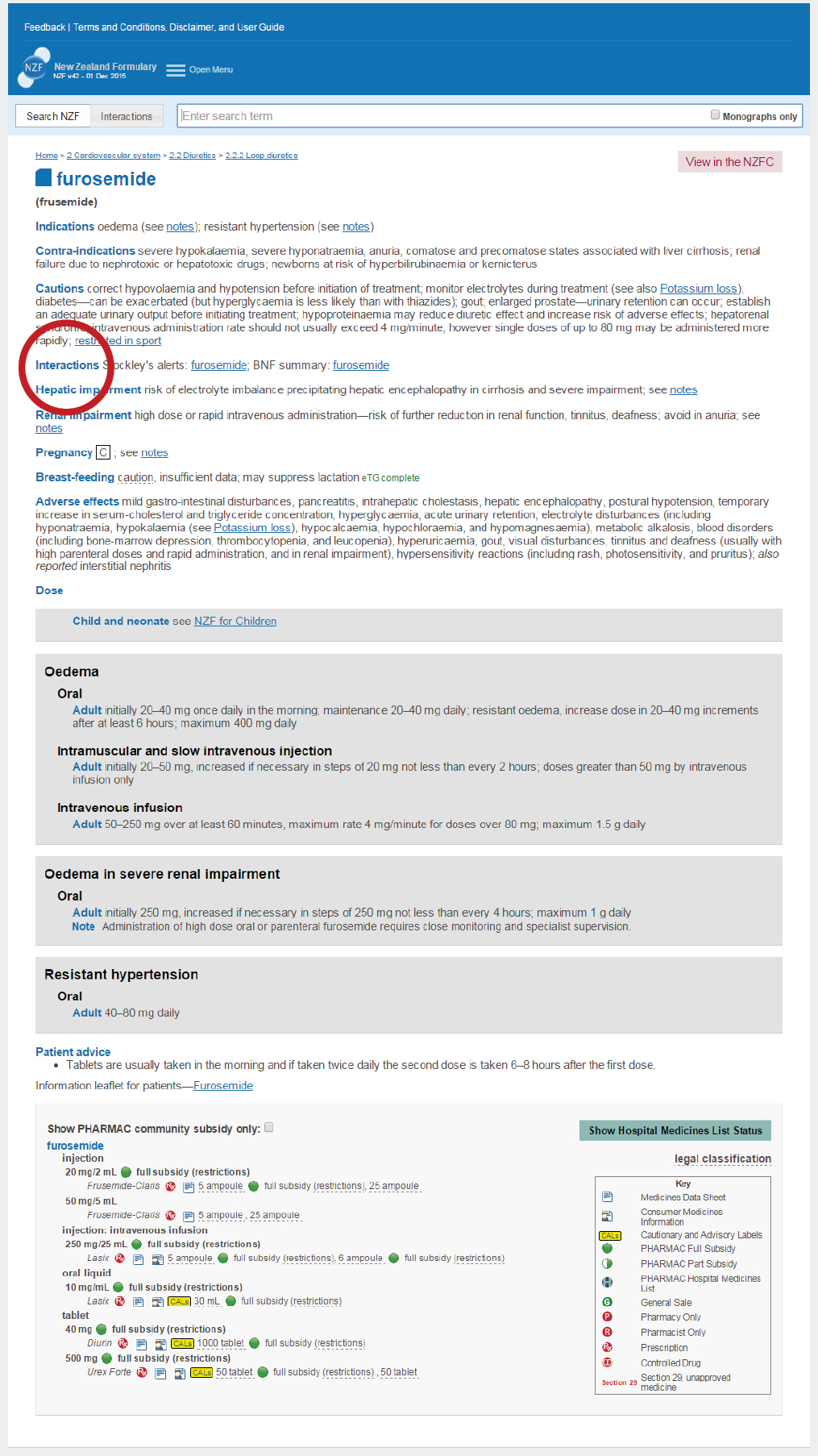 View / Download pdf version of this article
View / Download pdf version of this article
The NZF Interactions Checker is located at the top of each page of the NZF online, beneath the blue NZF banner and beside
the “Search NZF” box at the top of the screen. The Interactions and the Search NZF boxes are either grey or white depending
on which is “active” (white) at the time (Figure 1).
To use the Interactions Checker, click on the “Interactions” box. A brief explanation of the Interactions Checker will
then appear. A search box at the top of the page is labelled “Enter medicines”. Type the first few letters of a generic
or brand name and select the medicine you want from the drop down box that appears. Search for potential interactions
by adding medicines to the search box one by one. If only one medicine is chosen, a list of all the known interactions
of that medicine will appear. There is no maximum number of medicines that can be entered into the Interactions Checker
each time a query is performed.
The results of the interactions search are displayed in a table format, with the most clinically significant interactions
appearing at the top of the table (Figures 2 and 3).
The results table displays:
- The sets of medicines that interact, from the list that has been entered
- A brief explanation of the mechanism for an interaction, if known
- The interactions identified in order of decreasing clinical significance, with a colour-coded square to indicate
what action is required: red = Avoid, orange = Adjust, gold = Monitor, green = Information (for less significant
interactions that require monitoring depending on patient characteristics), white = No action
- Specific advice on what action to take, e.g. avoid combination, alter dose(s), monitor for adverse effects, monitor
for reduced effect, monitor plasma concentration
- Expected severity of the interaction if adjustments to treatment are not made
- The level of evidence for the combination being deemed to be a drug interaction and for identifying the interaction’s
clinical importance: Extensive evidence, Formal study, Case reports, Theoretical evidence
The drug interactions information in the NZF Interactions Checker is provided by “Stockley’s Interaction Alerts” which
is a United Kingdom source of interactions information that is easily applied and relevant to clinical decision making
in New Zealand. Stockley’s Interaction Alerts holds interaction information on all medicines that appear in the NZF.
The NZF Interactions Checker does not include opposing or additive pharmacodynamic effects in the definition of an interaction.
Clinicians therefore need to be alert for opposing or additive pharmacological or adverse effects between medicines that
may not be identified as an interaction by the NZF Interactions Checker.
Examples of such combinations of medicines that are not identified as significant drug interactions in the NZF Interactions
Checker include:
- An oral non-selective beta-blocker such as carvedilol, labetalol or propranolol and an inhaled beta-1 receptor agonist
such as salbutamol, which should not be taken together as their effects oppose each other
- Omeprazole, a proton-pump inhibitor, and ranitidine, a histamine-2 receptor antagonist, are both indicated for the
treatment of gastric ulceration but do not usually provide additional benefit if used together
Additional interactions information appears in each individual NZF drug monograph under the heading “Interactions”.
There are links to both the drug interaction summaries from the British National Formulary and to the Stockley’s Interaction
Alerts information that appears in the NZF interactions checker (Figure 4). Occasionally supplementary statements are
also included in this section.

Figure 1: Interactions search box shown in NZF online.

Figure 2: Example of interactions table of results for four selected medicines

Figure 3: Example of interactions table of results for one medicine and two interacting substances. N.B. the
search term “ethanol” must be used, rather than alcohol, when entering substances in the interactions checker. “Tobacco” is the
correct search term for identifying interactions between medicines and smoking.

Figure 4: Example of a drug monograph, showing the location of links to interactions information.